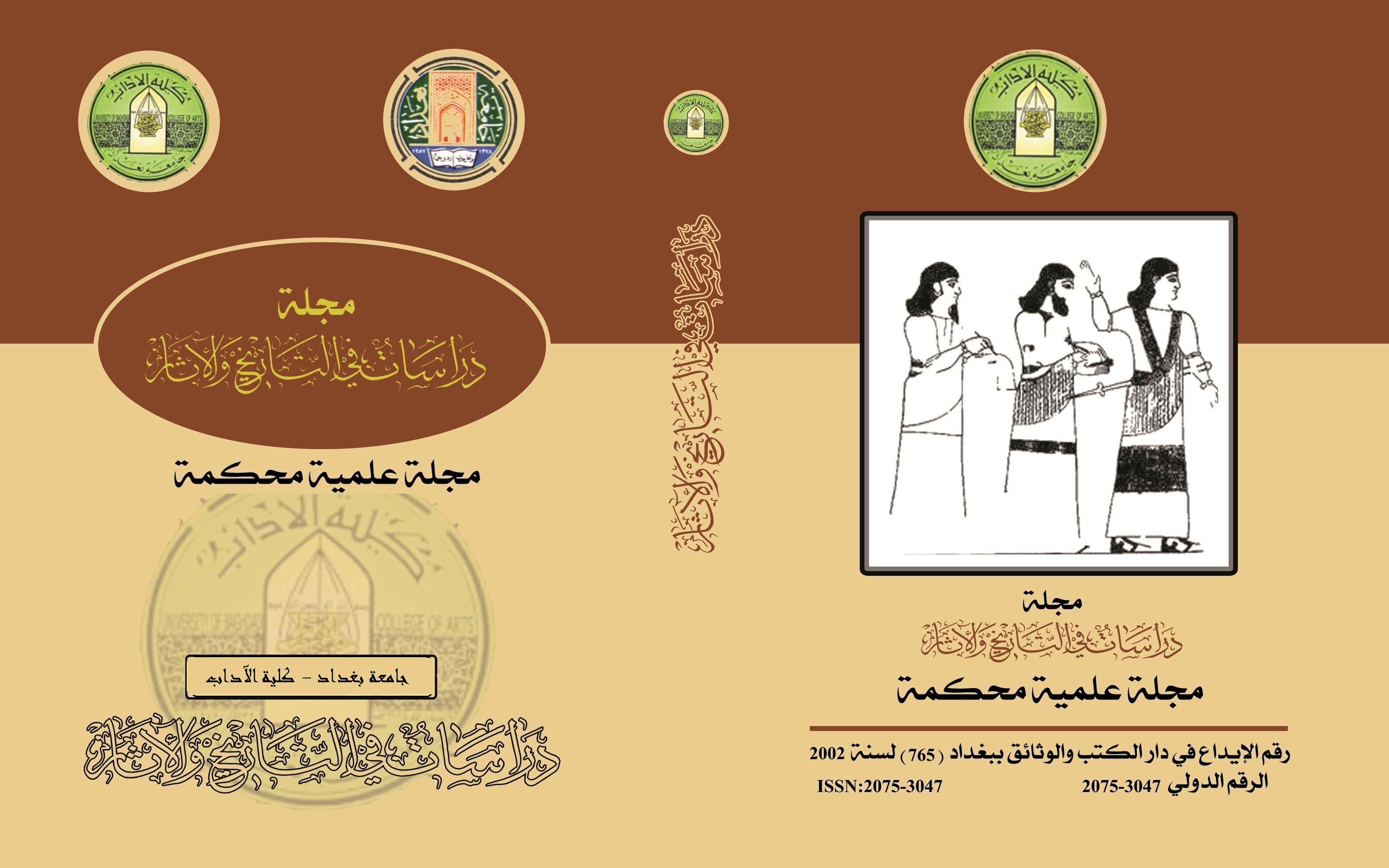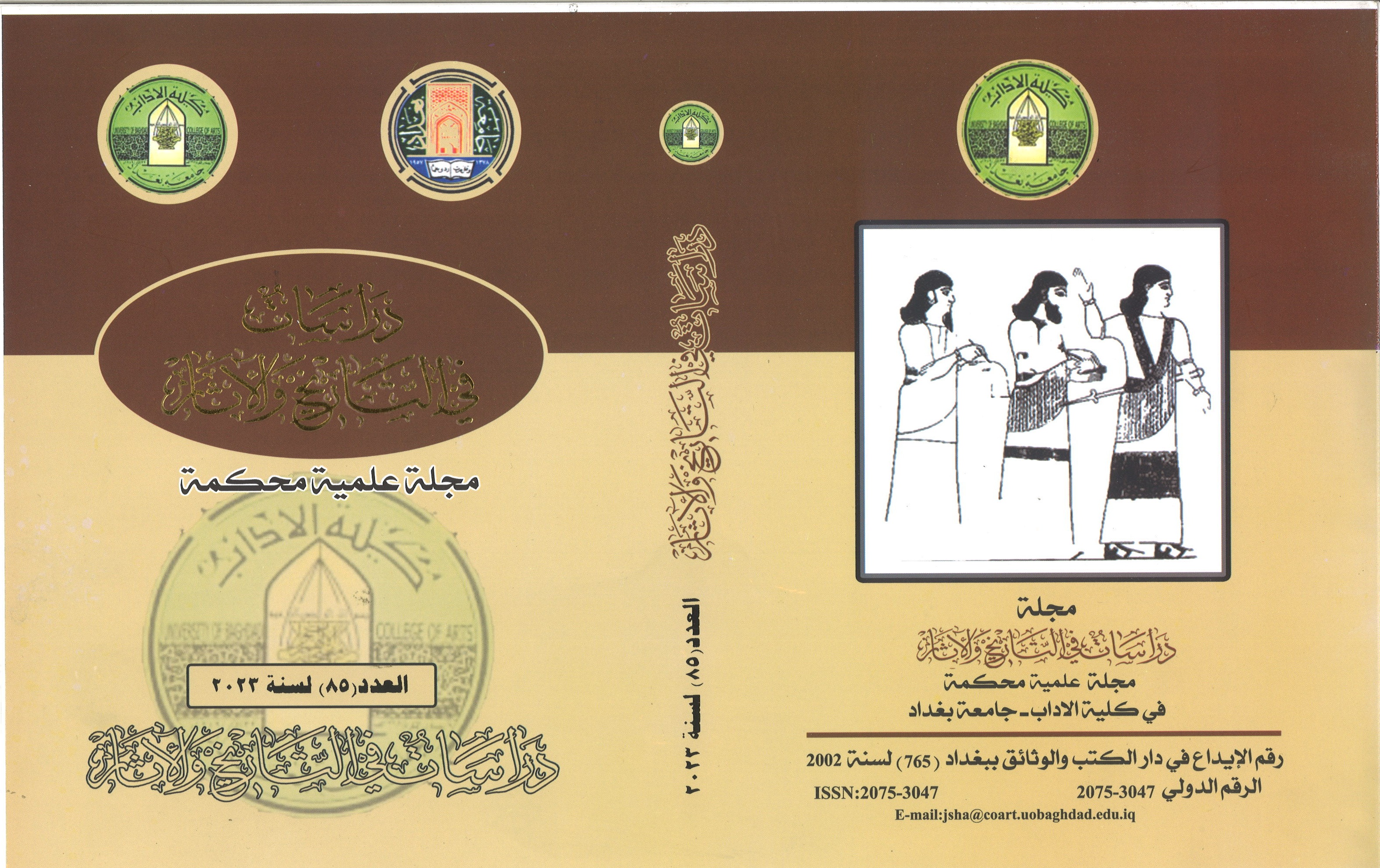"الدور الامريكي في حرب الجهاد الافغاني ضد السوفييت" (1981-1989)
الكلمات المفتاحية:
دور، حرب، افغان، السوفييتالملخص
قدم الغزو السوفيتي لأفغانستان تحديات أمنية واقتصادية للولايات المتحدة. فبعد الغزو السوفيتي لأفغانستان ، لم يكن لدى الولايات المتحدة استراتيجية واضحة لكيفية الرد على الغزو.، وعندما زار غلام فاروق عزام الولايات المتحدة وهو العضو البارز في جبهة " نجاة ميلي" ووزير التعليم الافغاني في عهد برهان الدين رباني بعد الغزو السوفيتي والتقى المسؤولين في واشنطن ،استنتج من اجتماعاته إلى أن الولايات المتحدة تشعر بالقلق من أن الاتحاد السوفيتي سوف لن يتوقف في أفغانستان وربما سيواصل سياسته التوسعية تجاه باكستان، ولم تخفي قلقها بشأن مصالحها في المنطقة ، لكنها لم تكن تجد الكيفية المناسبة لمعالجة هذه القضية. جل ما كان يعرفوه هو أن الأفغان كانوا على استعداد لمحاربة الروس وأن الأميركيين على استعداد لمساعدتهم. في نهاية السبعينات وطوال الثمانينيات استخف صناع السياسة الامريكية بعدم يقينهم في المستقبل، عندما كانوا يحددون الخيارات السياسية المتعلقة بأفغانستان. لقد اعتقدوا أن لديهم سيطرة أكبر على الأحداث مما كانوا يتمتعون به بالفعل، فمن من خلال توفير الدعم المالي والعسكري للمجاهدين الأفغان، سيتمكنون من السيطرة على المجاهدين اما مباشرة أو من خلال باكستان، وتقليل أي مشاكل محتملة معهم ، والتي قد تنشأ نتيجة لمساعدتهم المالية والعسكرية . وفي الوقت نفسه فقد اخفقوا في فهم "الانقسام الاثني واللغوي ، والتركيبة الاجتماعية ، والايدولوجية الدينية للأفغان" ، وهي عوامل مهمة لفهم أفغانستان وشعبها. بالإضافة الى ذلك، لم يتمكن صناع السياسة في واشنطن من النظر خارج نطاق تجربتهم وأرادوا رؤية الأشياء بشكل إيجابي. تفاؤلهم هذا ضلل تصوراتهم وتفكيرهم، ما أدى به إلى تبسيط الطبيعة المعقدة للجهاد الأفغاني. بمعنى آخر، اعتقدت الولايات المتحدة، إذا قدمت الأموال والأسلحة للمجاهدين الأفغان، فإنهم سيحاربون الاتحاد السوفيتي والنظام الشيوعي، مما يتسبب في انهيار النظام في كابول، ثم عودة الأمور إلى طبيعتها. على العكس من ذلك، لم تعد الأمور الى طبيعتها فحسب، بل انتهت بعد الانسحاب السوفياتي وانهيار النظام الشيوعي، الى حرب أهلية. وربما يرجع ذلك الفشل أساسًا إلى سوء فهم الولايات المتحدة للبنية الاجتماعية والدينية لهذه البلاد، وربما ايضا محاولات باكستان المتعمدة لتضليل الرؤية الامريكية التي اثرت بشكل أو بآخر في أتجاه السياسة الخارجية الامريكية أزاء تطورات الاحداث في افغانستان.
المراجع
- A concurrent resolution to encourage and support the people of Afghanistan in their struggle to be free from foreign domination," S.CON RES.74, 3 October 1984, in Bill, Resolutions (database on- line), Library of Congress, accessed May 13, 2006.
- Steve Gagster, "Afghanistan: The making of U.S. Policy," Volume II: Afghanistan: Lessons From the Last War, 9 October 2001, in National Security Archive [database on-line], George. Washington University Library, accessed May 13, 2006.
- Shane .Smith, U.S Afghanistan policy from the post, Soviet withdrawal and the Nagibullah Regimeit left behind ,A Research Report to Air force fellows ,Air force fellows ,Air university ,Maxwell Air force base , Al bama , March2013.
ثانياً : الكتب الاجنبية :
- Andrew E. Busch, Ronald Reagan and the Politics of Freedom (Lanham, Maryland: Rowman & Littlefield Publishers, Inc., 2001).
- Ronald Reagan, An American Life: The Autobiography (New York: Simon and Schuster, 1990).
- Steven W. Hook and John Spinier, American Foreign Policy Since World War I| (Washington, D.C.. CQ Press, 2007).
- Kirsten Lundberg, "Politics of a Covert Action: The US, the Mujahideen, and the Stinger Missile," Kennedy School of Government, Case Program, (1999).
- Steve Gagster, "Afghanistan: The making of U.S. Policy," Volume II: Afghanistan: Lessons From the Last War, 9 October 2001, in National Security Archive [database on-line], George. Washington University Library, accessed May 13, 2006.
- Todd dive ,offensive by Nicaraguan freedom fighters may. Doomed as Ames, Aid dry up ,Ottawa citizen,(1986,Februy,26).
- Bruce E. wright, theory in the pvactice of the Nicaraguan Revolution, New york :Latin American stdies.1995.
- Kirsten Lundberg, "Politics of a Covert Action: The US, the Mujahedeen, and the Stinger Missile," Kennedy School of Government, Case Program, C15-99-1546.0 (1999): .
- Steve Coll, "Anatomy of a Victory: CIA's Covert Afghan War," Washington Post, 19 July 1992.
- Ghaus Khayberi, Afghanistan Ki Toppan (Peshawar, Pakistan: Danish Kitabtoon, 1999).
- Gabriel Koloa, Another Century of War? (New York: New Press, 2002).
- Larry P. Goodson, Afghanistan's Endless War: State Failure, Regional Politics, and the Rise of the Taliban (Seattle, Washington: University of Washington Press, 2001).
- Abdul-Qayumn Mohamed, "The War on Afghanistan," The New Frontier/1, no. 2 (2001).
- John Sinclair pettier poison ,Henry Jackson ,the Jackson vain Augment and détente Ideology , Ideas, and united states foreign policy in the Nixon Era, unpublished doctoral dissertating ,the faculty the Graduate school of the university of Texas. Asyut (989).
- Akira Irene ,the cold war in Asia ,A Historical Introduction, New Jersey ,prentice-Hull Euc,1974.
- Stephen E. Ambrose and mark Plagon, the Reagan Doctrine: Sources of American conduct in the cold war’s last chapter ,Foreign Affairs (council on foreign Relations)73,Janary 1994.
- Gauss Khyber, Afghanistan Ki Toppan (Peshawar, Pakistan:
Danish Kitabtoon, 1999).
- Mohammad Youssef, Silent Soldier: The Man Behind the Afghan Jihad (Lahore, Pakistan: Jang Publishers, 1992).
- Masson Akhtar zahid, dictatorship in Pakistan: a Study of Zia Era(1977-1988),Pakistan Journal of History and culture 32,no. (2011).
- Maqbool Arshad, Khofia Repartee (Lahore, Pakistan: Fateh Publishers, 2001).
- Scott Simmie and Bob Nixon, Tiananmen Square, University of Washington Press, 1989. Xi.
- Gabriel Kolko, Another Century of War? (New York: New Press, 2002).
- Larry P. Goodson, Afghanistan's Endless War: State Failure, Regional Politics, and the Rise of the Taliban (Seattle, Washington: University of Washington Press, 2001).
ثالثاً : الموسوعات والقواميس
- :Encyclopedia of the American Presidency, Edited by:Leanard W.Levy and Louis Fisher, Now York,Simon and Schuster,1994, Vol.3, Pp.1280- 1281.
- Russia Are Reference Guide From the Renaissance to the Present , Edited by : Mauricio Brrero , Now York, Factson File Inc, 2004.
- The Encyclopedia of the united states congress ,Edited by: Donald c. Bacon and ROYER H. Davidson, New york ,simon Shuster, 1995,vol ..4,1770.
- History Dictionary of Pakistan ,Edited by :shahid Javed,3Edition, Maryland, the scarecrow scarecrow press,lnc,2006.
رابعاً : المجلات والصحف :
- Abdul-Qayumn Mohmand, "The War on Afghanistan," The New Frontier/1, no. 2 (2001).
- Salman Baugh and others, the Durand line Agreement(1893)delimitation and demarcation of the frontier line, Journal of law and society ,VOL .40,No.55 and 56 ,July ,2010.
- The New york times Archives ,Regan Gives Viejas on the Vietnam war,April5,1984,section,B.
التنزيلات
منشور
إصدار
القسم
الرخصة

هذا العمل مرخص بموجب Creative Commons Attribution 4.0 International License.
:حقوق الطبع والنشر والترخيص
بالنسبة لجميع البحوث المنشورة في مجلة دراسات في التاريخ والآثار، يحتفظ الباحثون بحقوق النشر. يتم ترخيص البحوث بموجب ترخيص Creative Commons CC BY 4.0 المفتوح ، مما يعني أنه يجوز لأي شخص تنزيل البحث وقراءته مجانًا. بالإضافة إلى ذلك ، يجوز إعادة استخدام البحث واقتباسه شريطة أن يتم الاستشهاد المصدر المنشور الأصلي. تتيح هذه الشروط الاستخدام الأقصى لعمل الباحث وعرضه.
:إعادة إنتاج البحوث المنشورة من الناشرين الآخرين
من الضروري للغاية أن يحصل الباحثون على إذن لإعادة إنتاج أي بحث منشورة (أشكال أو مخططات أو جداول أو أي مقتطفات من نص) لا يدخل في نطاق الملكية العامة أو لا يملكون حقوق نشرها. يجب أن يطلب الباحثون إذنًا من مؤلف حقوق النشر (عادة ما يكون الناشر).
يطلب الإذن في الحالات التالية:
بحوثك الخاصة المنشورة من قِبل ناشرين آخرين ولم تحتفظ بحقوق النشر الخاصة بها.
مقتطفات كبيرة من بحوث أي شخص أو سلسلة من البحوث المنشورة.
استخدم الجداول والرسوم البيانية والمخططات والمخططات والأعمال الفنية إذا لم يتم التعديل عليها.
الصور الفوتوغرافية التي لا تملك حقوق لنشرها.
لا يطلب الإذن في الحالات التالية:
إعادة بناء الجدول الخاص بك مع البيانات المنشورة بالفعل في مكان آخر. يرجى ملاحظة أنه في هذه الحالة يجب عليك ذكر مصدر البيانات في شكل "بيانات من ..." أو "مقتبس من ...".
تعتبر عروض الأسعار القصيرة معقولة الاستخدام العادل ، وبالتالي لا تتطلب إذنًا.
الرسوم البيانية ، الرسوم البيانية ، المخططات ، الأعمال الفنية التي أعاد الباحث رسمها بالكامل والتي تم تغييرها بشكل ملحوظ إلى درجة لا تتطلب الاعتراف.
الحصول على إذن
لتجنب التأخير غير الضروري في عملية النشر ، يجب أن تبدأ في الحصول على أذونات في أقرب وقت ممكن. لا يمكن لمجلة الآداب نشر بحث مقتبس من منشورات أخرى دون إذن.
قد يمنحك مالك حقوق الطبع والنشر تعليمات بشأن شكل الإقرار الواجب اتباعه لتوثيق عمله ؛ بخلاف ذلك ، اتبع النمط: "مستنسخ بإذن من [المؤلف] ، [كتاب / المجلة] ؛ نشره [الناشر] ، [السنة]." في نهاية شرح الجدول ، الشكل أو المخطط.



















